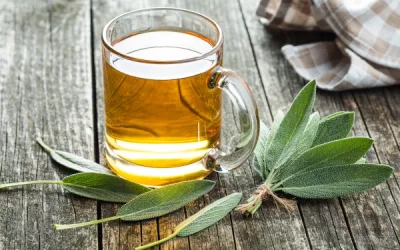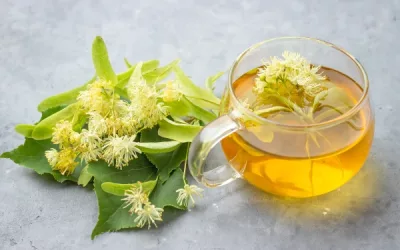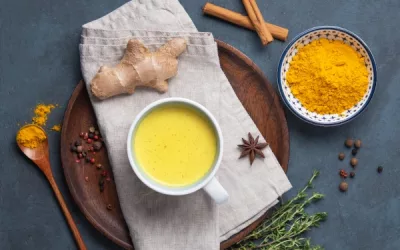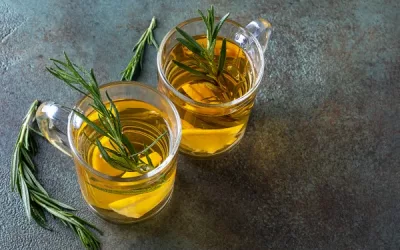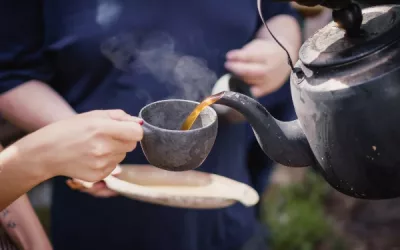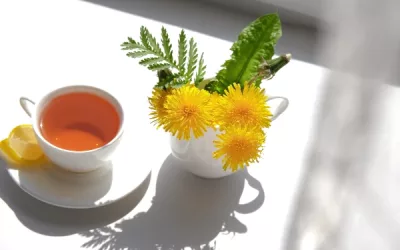Have you ever sipped a beverage that connects you with nature? Pine needle tea, often overlooked, is packed with vitamins and antioxidants, offering surprising health benefits and unique flavours. As a natural remedy enthusiast or a health-conscious individual, understanding the wonders of this herbal infusion is essential. This guide will explore the myriad benefits, preparation methods, safety considerations, and creative uses of pine needle tea, ensuring that you can enjoy this aromatic drink to its fullest. Let’s dive into the world of pine needle tea!
Table of Content
- What is Pine needle tea?
- How do you prepare pine needle tea safely?
- Is pine needle tea safe to drink?
- Can you use any type of pine needles for tea?
- What nutritional contents does pine needle tea have?
- How does pine needle tea compare with other herbal teas?
- What are some creative ways to use pine needle tea?
- Conclusion
What is Pine needle tea?
Pine needle tea is a herbal tea made by steeping the needles of pine trees in hot water. It’s a traditional beverage that has been consumed for centuries, especially by indigenous peoples in North America, Asia, and Europe, valued for its potential health benefits and medicinal properties.
Here’s a closer look at the characteristics pine needle tea:
- Flavor: Pine needle tea has a fresh, slightly resinous flavor with hints of citrus, depending on the species of pine used. It has a mild, pleasant taste and can be enjoyed on its own or with sweeteners like honey.
- Aroma: The tea has a refreshing and invigorating aroma, often described as forest-like, reminiscent of a walk through a pine forest.
Pine needle tea is a natural, vitamin-rich beverage that offers various potential health benefits, particularly for immune support and respiratory health. It’s important to use the right species of pine and follow preparation guidelines to ensure safety and effectiveness.
The story of pine needle tea dates back to indigenous communities who used it for its medicinal properties. The Haudenosaunee people, also known as the Iroquois, are known to have used pine needle tea to treat scurvy among early European settlers.
These settlers, suffering from a lack of essential nutrients during harsh winters, found relief and recovery thanks to the high vitamin C content in the tea. This historical usage underscores the tea’s enduring value.
How do you prepare pine needle tea safely?
Preparing pine needle tea is a simple and rewarding process. The key is to use fresh, young pine needles and to ensure they come from a non-toxic species. Pine needle tea is packed with vitamins such as Vitamin C and has a delightful, slightly citrusy flavour. Follow the steps below to brew this refreshing beverage safely.
To help you further, I have created a table detailing the preparation steps, recommended pine needle types, steeping times, and safety tips. This table will guide you through the process efficiently and ensure that you make a safe and delicious cup of pine needle tea.
Detailed Table on Preparing Pine Needle Tea
| Steps | Types of Pine Needles | Steeping Times | Safety Tips |
|---|---|---|---|
| Gather fresh needles | Eastern White Pine, Red Pine, Black Pine | 5-15 minutes | Avoid yew, hemlock, and Ponderosa pine needles |
| Rinse needles thoroughly | Any non-toxic species | N/A | Use cold water to rinse |
| Cut needles into pieces | Eastern White Pine, Red Pine | N/A | Use clean, sharp scissors |
| Boil water | Any non-toxic species | N/A | Use filtered water if possible |
| Add needles to water | Eastern White Pine, Red Pine, Black Pine | N/A | Add needles after water has boiled |
| Steep tea | Eastern White Pine, Red Pine | 5-15 minutes | Cover the pot to retain heat |
| Strain and enjoy | Any non-toxic species | N/A | Use a fine mesh strainer |
| Optional: add sweeteners | Any non-toxic species | N/A | Use honey or lemon, if desired |
Explanation of the Table:
- Steps: Follow these sequential steps to prepare your pine needle tea.
- Types of Pine Needles: Use needles from safe, non-toxic pine species.
- Steeping Times: Steep for the recommended time to achieve the best flavour and nutrient extraction.
- Safety Tips: Follow these tips to ensure your tea is safe and enjoyable.
Benefits of Pine Needle Tea
Pine needle tea isn’t just a tasty beverage; it’s also packed with health benefits. Here’s why you might want to add it to your routine:
- Rich in Vitamin C: Helps boost the immune system.
- High in antioxidants: Fights free radicals in the body.
- Anti-inflammatory properties: May help reduce inflammation.
- Respiratory aid: Can soothe coughs and congestion.
- Rich in Vitamin A: Good for eye health and skin.
These benefits make pine needle tea a perfect drink for anyone interested in natural health remedies. Whether you’re out camping or just want to try something new at home, it’s a great addition to your diet.
Choosing the Right Pine Needles
Not all pine needles are created equal. It’s crucial to pick the right type for both safety and taste. Here are a few types you can safely use:
- Eastern White Pine
- Red Pine
- Black Pine
Avoid using needles from yew, hemlock, and Ponderosa pine. These can be toxic and should not be consumed. Always double-check the species before harvesting.
What should you consider when foraging for your own pine needles?
If you fancy yourself a modern-day forager, here are some crucial tips for collecting your pine needles safely and sustainably:
- Tree Identification: Make sure you’re picking from a non-toxic pine species like Eastern White Pine.
- Environment: Avoid areas near roads or industrial zones to steer clear of pollutants.
- Season: Spring and early summer are the best times for tender, aromatic needles.
- Legalities: Know the local laws regarding foraging. Some parks and reserves have strict rules.
- Sustainable Practices: Don’t strip a tree bare; moderation is key.
Foraging isn’t just about the hunt; it’s also about being a responsible steward of nature. Think of it as a nature hike with benefits.
Ancient Greek physician Hippocrates, often called the “Father of Medicine,” recognised the medicinal properties of herbs and plants. He wrote extensively about their uses in treating various ailments.
Pine needles were among the many plants he documented, noting their ability to help with respiratory issues and inflammation. This ancient wisdom has carried through the centuries and remains relevant today.
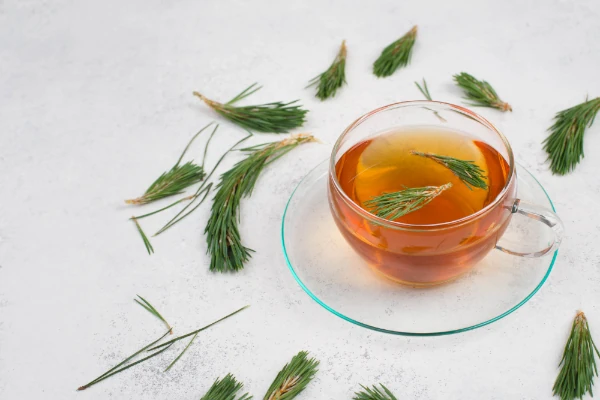
Is pine needle tea safe to drink?
Alright, chap, let’s talk pine needle tea. You’ve picked up on this woodland brew, and it sounds pretty posh, but you’ve got that niggling doubt, “Is this stuff safe?” Well, let’s dive in.
To start with, not all pine needles are created equal. You’ve got to be choosy, just like with socks – some are comfy and some are itchy. Safe pine needle varieties typically come from Eastern White Pine, Red Pine, and Black Pine.
These guys won’t do you any harm. But be wary of Yew, Norfolk Island Pine, and Ponderosa Pine. They sneak in toxins like a party crasher, and you don’t want those toxins in your cuppa.
Safe consumption limits? Well, moderation is key, my friend. Don’t go guzzling litres of the stuff; one or two cups a day is plenty but always consult a professional physician first. It’s packed with vitamin C, but too much of a good thing can turn bad.
Now, on to side effects. Pine needle tea’s got antioxidants and anti-inflammatory properties – a bit like the superhero of teas. However, some folks might experience nausea or headaches if they overdo it. Y’know, nothing’s perfect.
And here’s where it gets tricky – medications and specific health conditions. If you’re on certain meds, like blood thinners or blood pressure tablets, pine needle tea might throw a spanner in the works. Preggers or planning to be? Best give it a miss – safety first!
What types of pine needles should be avoided?
You’ve got your friendly pines, and then you’ve got the outright rogues. Best to steer clear of these troublemakers:
- Yew (Taxus): Not technically pine, but sneaky enough to fool some. Highly toxic.
- Norfolk Island Pine (Araucaria heterophylla): Pretty to look at, poisonous to sip.
- Ponderosa Pine (Pinus ponderosa): Can cause skin irritation and is toxic to cattle.
- Lodgepole Pine (Pinus contorta): Not one for your teapot.
- Monterey Cypress (Cupressus macrocarpa): Another no-go in the pine tea world.
So, stick to the good guys like Eastern White Pine and Red Pine. If in doubt, ‘Google it’ might save you a trip to A&E.
Are there any known side effects of drinking pine needle tea?
Wondering if that woodland elixir has hidden nasties? Rundown of the potential side effects:
- Nausea: Too much pine goodness can upset your tummy.
- Headaches: Overconsumption might make your head pound.
- Skin Irritation: If you’ve got sensitive skin, handling certain pine needles can cause a rash.
- Allergic Reactions: Though rare, some folks could break out in hives.
- Uterine Stimulation: Pregnant women should avoid this tea, just to be safe.
Generally, if you’re sipping sensibly and avoiding the baddies, you’ll be right as rain.
How does it interact with medications or specific health conditions?
You taking meds, or have particular health conditions? Here’s what you need to know before sipping this forest brew:
- Blood Thinners (Warfarin): Pine needle tea contains vitamin K, which could interfere with anticoagulants.
- Blood Pressure Medication: High vitamin C levels might lower blood pressure further than intended.
- Diabetes: No direct conflict, but check with your doc if unsure.
- Pregnancy: Best avoided due to its potential uterine-stimulating effects.
- Kidney Issues: High levels of certain acids in pine could be a bother.
If you find yourself nodding along to any of these, have a chat with your GP before making it your daily drink.
You see, back in the day, sailors battling scurvy stumbled upon pine needle tea as their saviour. Jacques Cartier’s crew, in the mid-1500s, drank an infusion of pine needles to ward off the scurvy demons while exploring Canada. This herbal hack from Native Americans brought them back from the brink. So, while it carries a history of goodness, like anything, it’s all about knowing your stuff and sipping smartly.
Can you use any type of pine needles for tea?
Pine needle tea. Sounds exotic, but wait, can you just grab any old pine needle and steep it in hot water? Well, not really. You can’t just snip some random needles and hope for the best. Let’s dive into the nitty-gritty of which types of pine needles are safe, how to identify them, and those you need to steer clear of.
What are the most recommended pine species for tea?
When it comes to making tea that won’t send you on an unscheduled trip to A&E, there are a few pine species that come highly recommended.
- Eastern White Pine (Pinus strobus): This one’s a classic. It’s got a mild flavour with a subtle citrusy note.
- Red Pine (Pinus resinosa): Also known as Norway Pine, it’s not from Norway, but it tastes splendid.
- Loblolly Pine (Pinus taeda): Common in the Southeastern U.S., this one’s a solid choice.
- Lodgepole Pine (Pinus contorta): Often found in the western U.S., it offers a bit more of a robust flavour.
These species are packed with vitamin C, making them not just tasty but also a bit of a health bomb.
How can you identify safe pine needles?
If you’re planning to venture into the woods to collect your own pine needles, here’s how to make sure you pick the right ones:
- Needle Colour and Texture: Safe pine needles are usually green and pliable. Avoid brown, brittle ones.
- Bundles of Needles: Pine needles often come in bundles called fascicles. Safe varieties like Eastern White Pine have clusters of 5 needles.
- Length of Needles: Typically, safe pine needles are between 2-5 inches long.
- Smell Test: Crush a needle and take a sniff. You should get a mild piney aroma. If it smells funky or off, skip it.
Remember, proper identification is crucial. When in doubt, consult a local expert or a reliable field guide.
What are the signs of toxic pine species?
Not all pine trees are your friends. Some needles you should avoid like the plague:
- Ponderosa Pine (Pinus ponderosa): These needles can be harmful. It’s like the bad boy of the pine world.
- Yew Tree (Taxus species): Technically not a pine, but it looks similar and is highly toxic. Beware!
- Norfolk Island Pine (Araucaria heterophylla): It’s popular in gardens but bad news for tea.
Look for these red flags to dodge a toxic brew:
- Needle Colour: Toxic species often have dull or discoloured needles.
- Berry Presence: Yew trees have red berries, making them easy to spot and avoid.
- Sticky Residue: If the needles leave a sticky or resinous residue, tread carefully.
An important note: Always err on the side of caution. If you’re not certain about a species, it’s best not to use it.
In the 18th century, sailors often suffered from scurvy due to a lack of vitamin C. Enter pine needle tea – a saviour at sea! Native American tribes had long known about the high vitamin content in pine needles, and they shared this knowledge with European settlers. Pine needle tea became a vital remedy to combat scurvy on long voyages when fresh fruit was a luxury.
So, when crafting your next cup of pine needle tea, channel your inner forager, but do it safely. Remember, not all that is green and needle-like is good for you. Stick to the tried-and-true species and enjoy a brew that’s as refreshing as it is beneficial. Cheers!
What nutritional contents does pine needle tea have?
Alright, let’s dive straight into the nitty-gritty of pine needle tea. Spoiler alert: it’s more than just leaves dunked in hot water; it’s a treasure trove of nutrients.
This green elixir offers a nutritional portfolio pretty much more impressive than your average health drink. We’ll break it down into vitamins, minerals, and the super-duper beneficial compounds to answer why pine needle tea should be on your next grocery list. But for now, just a quick heads-up: if you thought lemons were the kings of vitamin C, think again.
How does the vitamin C content compare to lemons?
Hold onto your hats because this is the part where pine needle tea steals the lime-light (pun intended). Imagine this – pine needle tea packs so much vitamin C, it could make lemons green with envy.
- A cup of pine needle tea boasts up to five times more vitamin C than a lemon.
- In other words, it’s a mini citrus explosion without the puckering sourness.
- Vitamin C, or ascorbic acid for the scientifically inclined, is crucial for boosting the immune system.
- It’s also a big player in collagen production, so say hello to glowing skin and healthy joints.
In summary, while lemons have had a long-standing reputation, pine needle tea is the stealthy overachiever that gives you way more bang for your buck when it comes to vitamin C. So, if you’re fighting off a cold, brewing yourself a cup of pine needle tea might just become your new go-to remedy.
What other nutrients are present in pine needle tea?
If you thought vitamin C was the only trick up pine needle tea’s sleeve, well, think again. This tea is like a Swiss Army knife of nutrients.
Here’s what else it brings to the table:
- Vitamin A: This powerhouse vitamin is multifunctional, promoting good vision and boosting the immune system.
- Vitamin E: Known for its antioxidant properties, it helps combat oxidative stress.
- Carotenoids: These are the magic compounds that give carrots their orange colour and contribute to eye health.
- Iron: Essential for blood production, keeping energy levels high.
- Magnesium: Helps with muscle function, nerve operation, and energy production.
- Amino acids: These little guys are the building blocks of proteins, essential for various bodily functions.
However, there’s more to it than just vitamins and minerals. Pine needle tea also flaunts antioxidants that act as your internal bodyguards, fending off free radicals and reducing inflammation. It’s basically like having a personal health squad in every cup.
How does it compare nutritionally to other herbal teas?
So you’re probably wondering, “How does pine needle tea stack up against my other beloved herbal brews?” Picture this: if herbal teas were contestants in a beauty pageant, pine needle tea wouldn’t just walk away with the crown; it’d grab the sash and bouquet too.
Let’s see how it compares:
- Vitamin Content: Compared to chamomile or peppermint tea, pine needle tea is a superstar in the vitamin department, especially vitamin C.
- Antioxidants: While most herbal teas offer a fair share of antioxidants, pine needle tea takes it to another level, particularly excelling due to its abundance of flavonoids and carotenoids.
- Minerals: It doesn’t shy away in the minerals section either. Herbal teas like rooibos do have comparable levels of iron and magnesium but are missing the richer profile of vitamins.
- Specific Benefits: A cup of pine needle tea offers anti-inflammatory benefits similar to turmeric tea and helps with respiratory health, unlike your regular green tea.
In a nutshell, pine needle tea isn’t just another herbal tea to add flavour – it’s packed with an envious array of vitamins, minerals, and antioxidants, making it an all-rounder in the herbal tea universe.
While we’re on the topic of extraordinary beverages, let me tell you about the time in World War II when British soldiers were plagued with scurvy, a nasty disease caused by vitamin C deficiency. They turned to an unlikely hero – pine needle tea. Yep, those soldiers learned from the Native Americans, who had been using pine needle tea for ages to fend off illnesses. So, the soldiers brewed up batches of this forest treasure and, lo and behold, their scurvy disappeared, all thanks to the high vitamin C content. Sometimes the ancient remedies turn out to be lifesavers, quite literally.
How does pine needle tea compare with other herbal teas?
Alright, let’s dive straight into the good stuff. Pine needle tea—yes, tea from those poky bits falling from evergreen trees—how does it stack up against other herbal teas, you might ask? Good question! Let’s break this down.
Pine needle tea has its own unique vibe, tastes, and health benefits. Just like how each herbal tea has its own personality, pine needle tea offers something distinctly different. Let’s chew the fat on this, shall we?
What makes pine needle tea unique among herbal teas?
First up, taste. Dubious about sipping on pine needles? Understandable—it sounds like something out of a bear Grylls episode. But hear this: Pine needle tea has a refreshing, slightly woodsy flavour. It’s like breathing in fresh, alpine air in liquid form. Compare this to chamomile which is more floral, or peppermint tea that feels like Christmas in a cup.
Now, on to the preparation. Making pine needle tea is as simple as it gets:
- Gather fresh pine needles from a tree (avoid the poisonous pines like Yew, by the way).
- Rinse them well to get off any dirt or critters.
- Chop the needles to release those lovely oils.
- Steep them in hot water for about 10 minutes.
- Strain and enjoy the brew.
Other herbal teas, like green tea or rooibos, usually need fancier prep—think precise water temperatures and steeping times. With pine needle tea, you’re pretty much good to go with hot water and a handful of needles. The outdoorsy, easy-going prep method ties in nicely with its rugged and natural appeal.
Finally, let’s talk cultural significance. Pine needle tea is deeply rooted in native cultures. Indigenous North Americans have used it for centuries as a source of vitamins during winter months. Contrast that with, say, Matcha tea, a central part of Japanese tea ceremonies, or chamomile, often found as a calming element in European herbal traditions. Pine needle tea brings a rustic touch to your tea repertoire.
How do its health benefits differ from other herbal teas?
Pine needle tea has some stellar health benefits that could make even the most devout green tea-drinker turn their head.
- Vitamin C Bomb: Pine needle tea is loaded with Vitamin C. We’re talking 4 to 5 times more than a glass of orange juice. Scurvy? No chance.
- Antioxidants: These little beauties help combat free radicals—Pine needle tea has plenty.
- Respiratory Health: It’s known for clearing up congestion and respiratory issues.
- Anti-inflammatory Properties: Good for aches, pains, and general inflammation.
- Immune System Boost: Packed with nutrients that help strengthen your body’s defence mechanisms.
Compare this to other teas:
- Green tea is lauded for its antioxidants and metabolism-boosting properties but falls short on Vitamin C.
- Chamomile excels in calming and aiding sleep but doesn’t pack the same vitamin punch.
- Peppermint tea soothes the digestive tract but isn’t renowned for bolstering the immune system.
You’ve got a herb here that stands out in the crowd with its fresh health-promoting attributes.
What are the cultural uses of pine needle tea compared to others?
Cultural uses of pine needle tea? Absolutely fascinating. Indigenous tribes, especially in North America, would whip up pine needle tea not just because it was tasty, but because it was a veritable health tonic, especially in the harsh winters.
They’d use it for everything from respiratory ailments to general vitality. It’s part of their harmonious relationship with nature.
Now contrast this with other herbal teas:
- Green Tea: Central to Japanese culture, often found in elaborate tea ceremonies symbolising purity and tranquillity.
- Chamomile: This floral tea has roots in European folk medicine, used mostly as a remedy for sleep and digestive troubles.
- Rooibos: Originated in South Africa, known as the “red bush” tea, it’s culturally significant to the local Khoisan people for its health benefits.
With pine needle tea, not only are you enjoying a tasty drink, you’re partaking in a long tradition of native natural remedy practices—you can’t get more authentic than that.
Back in the days when pine needles were more precious than gold, the famous French explorer Jacques Cartier learned the hard way about their value. In 1535, amidst the chilling Canadian winter, Cartier and his men were desperately trying to fend off scurvy.
Lucky for them, the local St. Lawrence Iroquoians introduced them to pine needle tea, a powerhouse of Vitamin C. It turned out to be a survival elixir, saving lives and proving that sometimes, nature’s simplest gifts are the most potent.
So, the next time you sip on pine needle tea, remember, it once saved an entire crew from the grip of scurvy. Quite the echo from the past, don’t you think?
What are some creative ways to use pine needle tea?
So, you’ve got your hands on some pine needle tea and you’re thinking, “Alright, I’ve brewed and sipped it, now what?” Well, let’s dive into a world of creative uses that’ll make you the Picasso of herbal tea aficionados. No more staring at that bag of needles wondering what to do—I’ve got you covered.
Pine needle tea isn’t just for drinking to show off to your friends at brunch. You can use it in the kitchen, slap it on your face (yes, you heard that right), and even whip it out as a remedy for those pesky common ailments. Sound intriguing? Buckle up.
How can pine needle tea be incorporated into recipes?
Cooking with pine needle tea can turn your regular dishes into aromatic masterpieces. Here’s how you can turn your kitchen into a Michelin-star restaurant (at least in your own eyes):
- Marinades and brines: Impart a refreshing, citrusy note to your meat, fish, or tofu by adding concentrated pine needle tea into your marinades or brines.
- Broths and soups: Pour some brewed pine needle tea into your chicken or vegetable broth for an earthy, pine-infused twist.
- Baking delights: Add powdered pine needles or a splash of pine needle tea to your cookie or bread dough, for a subtle hint of the forest.
- Cocktails and mocktails: Impress your guests by shaking up your cocktails with a shot of pine needle tea, giving a piney, aromatic taste.
- Salad dressings: Use a tablespoon of brewed pine needle tea in your vinaigrettes for an unexpected zing.
Remember, it’s all about experimenting and letting those botanical flavours elevate your culinary game to new heights.
Speaking of herbalists, did you know that indigenous tribes, like the Potawatomi, used pine needle brew as a cure-all? During the harsh winters, they weren’t just surviving but thriving, thanks to their herbal knowledge. They used pine needles to stave off scurvy when the only sources of vitamin C were scarce.
So there you have it, the mighty versatility of pine needle tea. Whether you’re cooking, beautifying, or healing, it’s got your back. Embrace the pine!
Conclusion
As I reflect on the multifaceted world of pine needle tea, I am genuinely struck by its rich tapestry of benefits, safety considerations, and culinary versatility. This remarkable herbal infusion is not just a delightful beverage; it is a powerhouse of nutrients, brimming with vitamin C and antioxidants that bolster immune health and sharpen mental clarity.
By understanding how to prepare pine needle tea safely, we can embrace its potential while being mindful of the varieties we choose and the potential side effects.
For those who wish to delve deeper, the exploration of foraging for safe pine needles presents an exciting opportunity to connect with nature. There’s something profoundly fulfilling about gathering your own ingredients, knowing their source, and discovering the unique flavour profiles that various pine species can offer.
As we navigate the landscape of herbal remedies, it’s crucial to remain informed about the differences in health benefits between pine needle tea and other herbal teas, thereby enriching our wellness choices.
In an age where we often seek natural alternatives, pine needle tea emerges as a compelling option, both for its traditional uses and its emerging popularity in modern herbalism. As you sip this fragrant brew, consider how elements of nature can enhance our well-being and everyday lives.
What if this simple beverage could lead you on a journey of discovery, connecting you not only to the wellness it promotes but also to the ancestral practices that honour our relationship with the earth?
I invite you to embrace the fragrant essence of pine needle tea, exploring its uses not just as a drink, but as an ingredient with potential culinary applications and even benefits in skincare. Let this guide be your starting point in this aromatic adventure, inspiring deeper connections to natural remedies and the environment around you. After all, nature has an incredible ability to heal, and pine needle tea is a beautiful reminder of that power.


